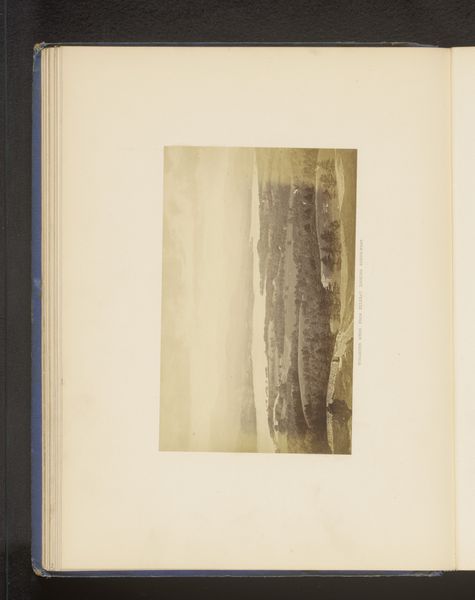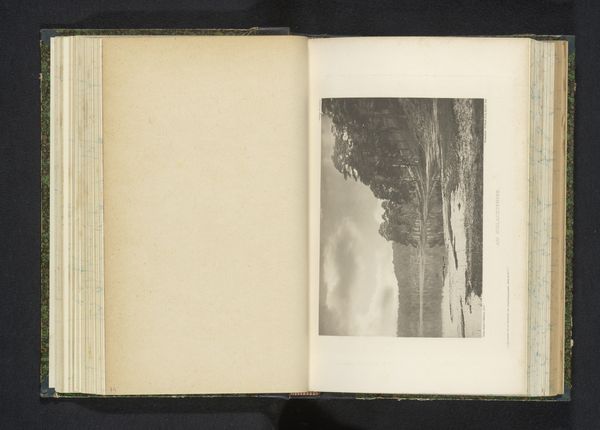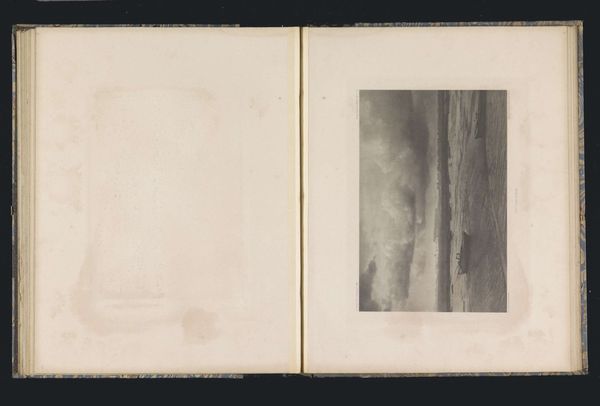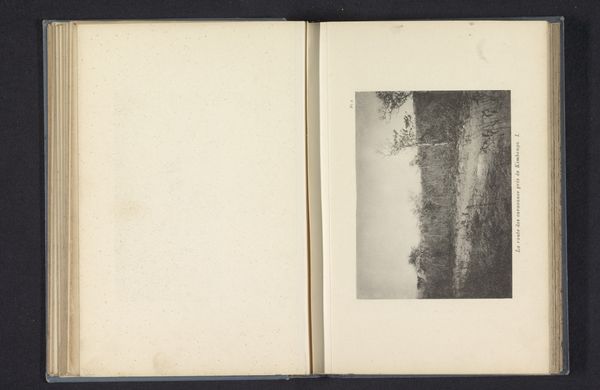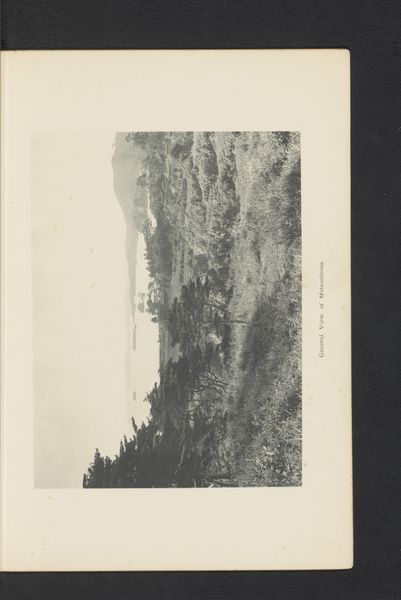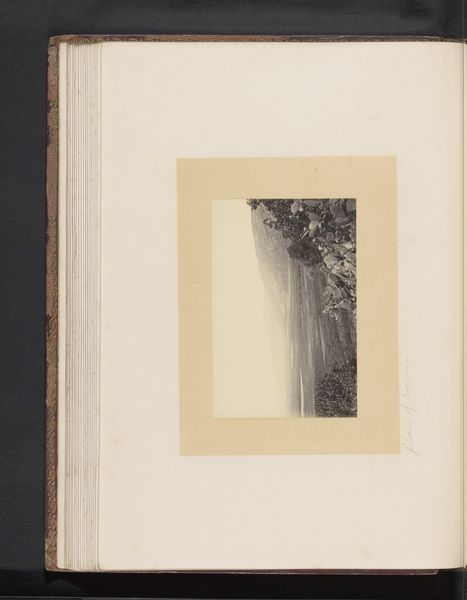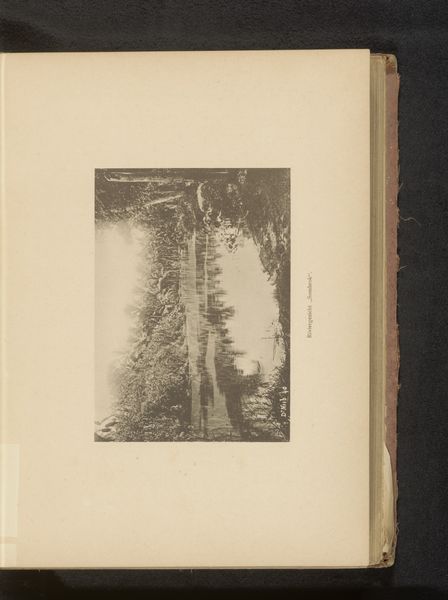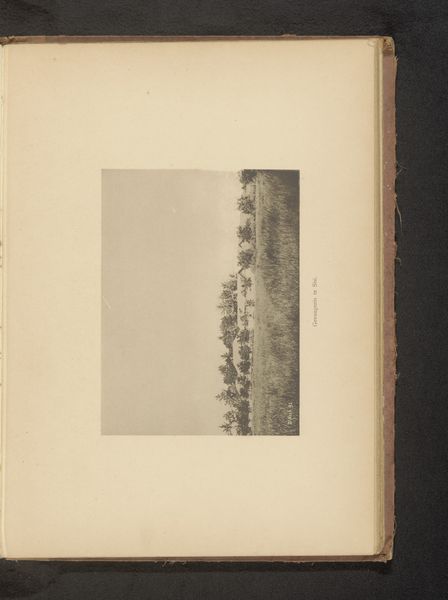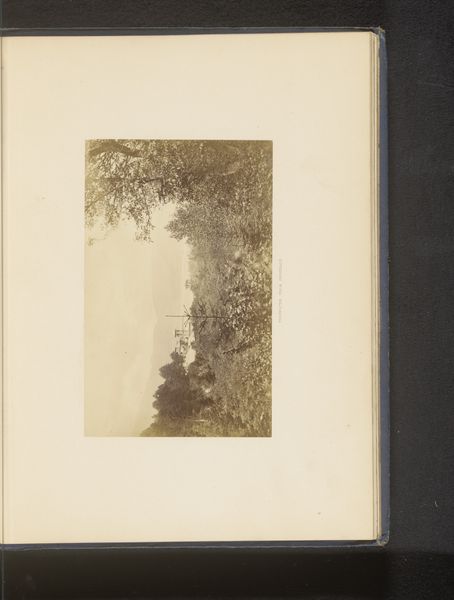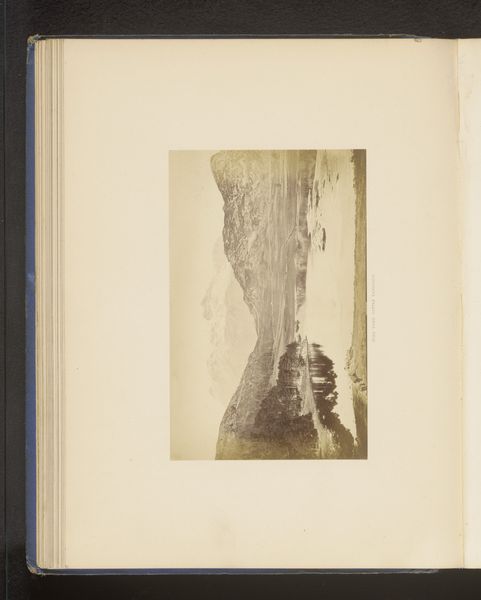
Dimensions: height 101 mm, width 153 mm
Copyright: Rijks Museum: Open Domain
Curator: Ah, yes, here we have "Gezicht op Great Langdale," a gelatin-silver print captured sometime between 1857 and 1867 by Garnett & Sproat. It really does summon the sublime. Editor: It strikes me immediately as melancholic. Look at that washed-out sky and the sheer immensity of the fells…a reminder of nature’s indifferent power, perhaps? Curator: Indifferent, maybe. I find it almost devotional, reminiscent of the Hudson River School's grand landscapes—the careful articulation of light and shadow... that quiet yearning for transcendence. One can't help but admire the technical labor involved in early photography, especially landscape work, dragging all that equipment into nature's embrace. Editor: Yes, but the means are not always pure... that sepia tone feels almost… calculated. You said gelatin-silver. So, we're seeing the result of industrial production, of specialized labor transforming raw materials, not simply an artist’s spontaneous expression? The social context looms large for me, considering the working conditions inherent in this technology at the time. Curator: Of course, and I would be interested in learning about that too. Though the image itself is far from being perfect, technically. Notice the slight blur, and perhaps some imperfections from the printing process— yet it's within these "flaws" that its magic really lies. We find vulnerability where we thought we'd see strength. It feels so incredibly real to me. Editor: Perhaps… The image, while seemingly 'real', presents a constructed ideal, smoothed out, rendered picturesque for consumption by an increasingly industrialized society eager to reconnect with an idealized 'nature.' Who profited from these views? How were they circulated? It is so interesting that this movement gained prevalence at this specific moment of industrial expansion. Curator: You've certainly given me plenty to mull over—particularly regarding the market of art and our perceptions of it as the consumer. Next time I’ll need to be even more observant on the role of materiality when gazing upon an artwork. Editor: And perhaps, just perhaps, I'll loosen my grip on historical analysis for a fleeting moment, allowing a bit more emotion to seep in from my surroundings, without forgetting about production processes! It seems like in art, as in life, there should always be some compromises to strike.
Comments
No comments
Be the first to comment and join the conversation on the ultimate creative platform.
